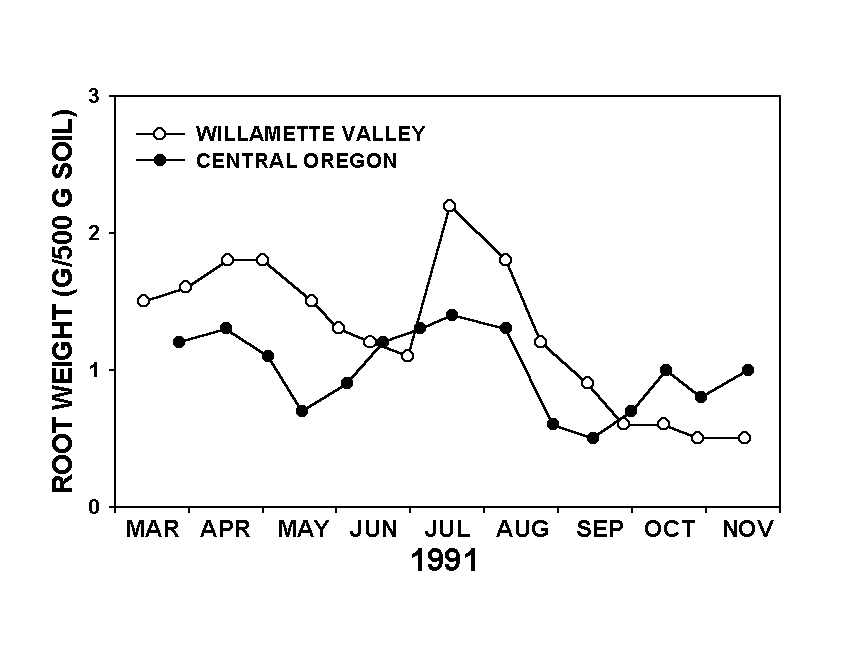|
POPULATION DYNAMICS |
|||
CONTENTS Nematode Species Mint
Nematode |
This section
contains information on root growth and population dynamics of nematodes of nematodes that
parasitize mint. Select a nematode species from the contents menu for more information on
life cycles, feeding behavior, population dynamics, and symptoms and effects on plant
growth. One of the most
important factors to consider in nematode biology and management, particularly in regard
to sampling, is that nematode population densities increase and decrease naturally through
the year, depending on the nematode species, life cycle strategy, soil temperature, and
root growth. Furthermore, these population cycles often occur at different times for
different nematode species.
This information was modified from Russell Ingham and Kathy Merrifield. 1996. A Guide to Nematode Biology and Management in Mint. Integrated Plant Protection Center, Oregon State University, Corvallis. Pub. No. 996. 38 p. |

